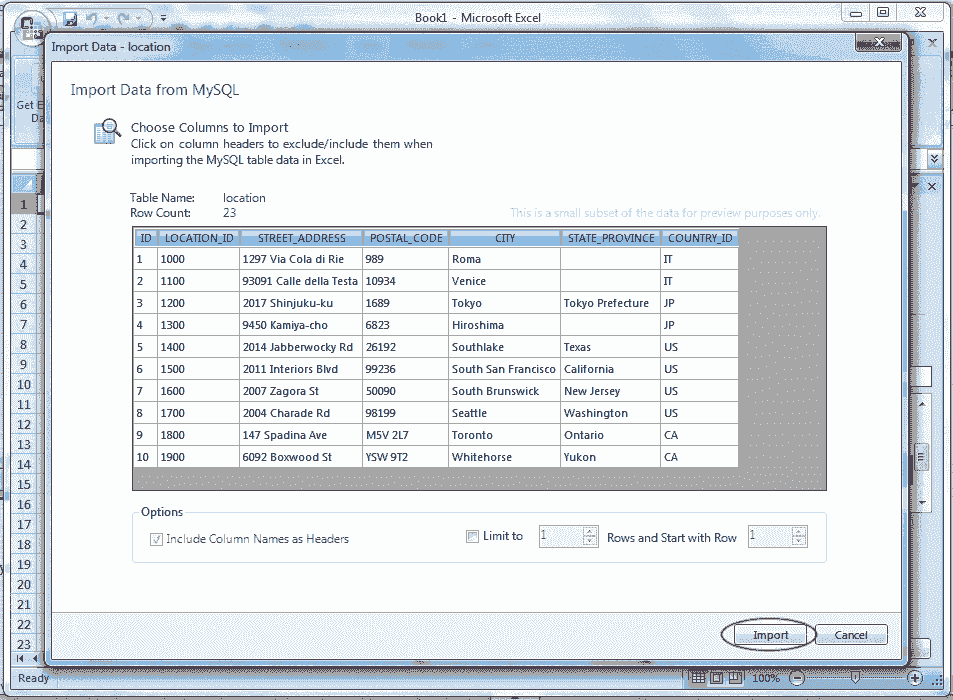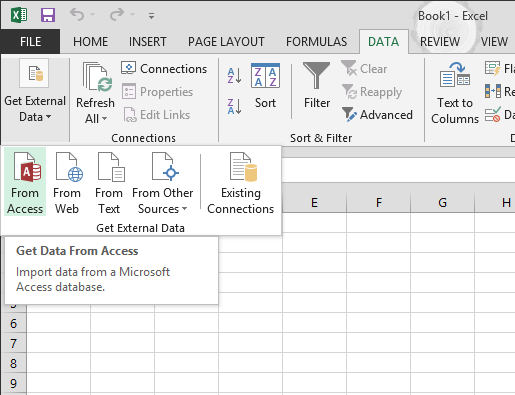
- IMPORT DATA FROM EXCEL TO EXCEL BY MATCHING COLUMN HOW TO
- IMPORT DATA FROM EXCEL TO EXCEL BY MATCHING COLUMN PLUS
Find rows with the same values in all columns ( Example 1).In your Excel worksheets, multiple columns can be compared based on the following criteria: =IF(EXACT(A2, B2), "Match", "Unique") Compare multiple columns for matches in the same row To find case-sensitive differences in the same row, enter the corresponding text ("Unique" in this example) in the 3 rd argument of the IF function, e.g.: If you want to find case-sensitive matches between 2 columns in each row, then use the EXACT function: Compare two lists for case-sensitive matches in the same rowĪs you have probably noticed, the formulas from the previous example ignore case when comparing text values, as in row 10 in the screenshot above. =IF(A2B2,"No match","") Matches and differencesĪnd of course, nothing prevents you from finding both matches and differences with a single formula:Īs you see, the formula handles numbers, dates, times and text strings equally well. To find cells in the same row with different values, simply replace the equals sign with the non-equality sign (): =IF(A2=B2,"Match","") Formula for differences To find cells within the same row having the same content, A2 and B2 in this example, the formula is as follows:
IMPORT DATA FROM EXCEL TO EXCEL BY MATCHING COLUMN PLUS
As you do this, the cursor changes to the plus sign: Enter the formula in some other column in the same row, and then copy it down to other cells by dragging the fill handle (a small square in the bottom-right corner of the selected cell). To compare two columns in Excel row-by-row, write a usual IF formula that compares the first two cells. Compare two columns for matches or differences in the same row This task can be done by using the IF function, as demonstrated in the following examples. When you do data analysis in Excel, one of the most frequent tasks is comparing data in each individual row.
IMPORT DATA FROM EXCEL TO EXCEL BY MATCHING COLUMN HOW TO
How to compare 2 columns in Excel row-by-row Formula-free way to compare two columns or lists in Excel.Highlight matches and differences between 2 columns.Compare two lists and pull matching data.Compare two columns for matches and differences.Comparing multiple columns for row matches.Comparing two columns in Excel row-by-row.In this tutorial, we will explore several techniques to compare two columns in Excel and find matches and differences between them. Microsoft Excel offers a number of options to compare and match data, but most of them focus on searching in one column. Great - you just used the VLOOKUP formula to get a neat list of countries, their populations, and their sizes! That’s data you can now paste into Datawrapper to create a neat chart, map, or table.Comparing columns in Excel is something that we all do once in a while. If you want to avoid that, put a $ sign in front of the values you want to fix in place, like so: A$2:B$10. size!A2:B10) and you apply the formula to more than one cell, then the range increases (e.g.

If your formula’s range covers only part of the column in the second sheet (e.g.

It’s easiest to select whole columns for your range ( A:B). This will apply the formula to all cells in column C that have a value in the column to their left: How to select only part of the column as the range To do so, select C2, then double-click on the little blue square in the lower right. It’s time to apply our formula to every country. The formula to use VLOOKUP is a bit tricky, so let’s go through it step by step.īut we didn’t do all that work just for Abkhazia.


That’s especially helpful if you have different countries in your two sheets and can’t just copy the size column and paste it next to the population column. For example, you can use it to ask Excel or Google Sheets: “Find Abkhazia in this column and return me its area from the column next to it.” (Abkhazia is a disputed territory on the Eastern coast of the Black Sea - yup, I also had no idea.) VLOOKUP is short for “vertical lookup.” It lets you find cells based on other cells. Here’s a video of everything you’ll learn in this article: I use it all the time to prepare data for my visualizations in Datawrapper. What’s the easiest way to join these two sheets into one table that shows the countries, their populations, and their areas? In Excel and Google Sheets, the answer is the formula =VLOOKUP().


 0 kommentar(er)
0 kommentar(er)
